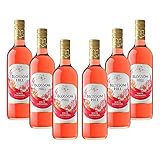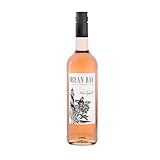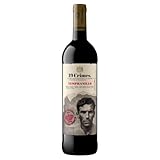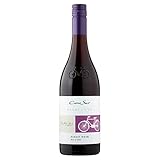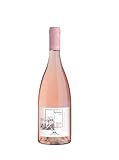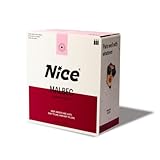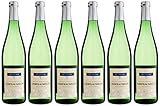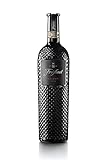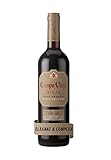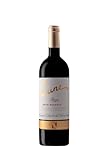What’s in this Guide?
- Introduction to Rosé Wines
- Best Selling Rosé Wine
- Types of Rosé Wines
- Popular Rosé Wine Regions
- What Does Rosé Wine Taste Like?
- How to do a Rosé Wine Tasting at Home?
- Pairing Rosé Wine With Food
- Health Benefits of Drinking Rosé Wine
- How to Properly Store and Serve Rosé Wine
- Popular & Budget-Friendly Rosé Wines in the UK
- Key Takeaways on Rosé Wine
- Best Selling Rosé Wine

Introduction to Rosé Wines
Raise your glasses, wine enthusiasts! Today, we embark on a tantalising journey through the world of rosé wines. With its beautiful blush hues and refreshing flavours, rosé wines have become the go-to choice for many wine lovers around the globe. In fact, did you know that rosé is now one of the fastest-growing categories in the UK? That’s right – this pink elixir has captured the hearts (and taste buds) of countless Brits.
So, get ready to explore the wonderful world of rosé wines – from delightful Provence Rosés to bold Syrah/Shiraz Rosé. Whether you’re a seasoned sommelier or just starting your wine adventure, this complete guide will have you swirling, sipping and savouring every drop.
Best Selling Rosé Wine
Types of Rosé Wines
When it comes to rosé wines, there is a wide range of options to choose from. Each type has its own unique characteristics and flavours that make it stand out. Let’s explore some of the most popular types of rosé wines available:
- Provence Rosé – Hailing from the picturesque region in France, Provence Rosé is known for its pale pink colour and delicate flavours. It offers a refreshing taste with notes of red berries and citrus fruits, making it perfect for warm summer days.
# Preview Product Price 1 Screaming Devil - Côtes de Provence Rosé Wine (1 x 0,75l) £9.97 Buy on Amazon 2 Ultimate Provence Rose Wine | Cotes De Provence Rose | Seductively-refreshing | 75cl £15.24 Buy on Amazon - White Zinfandel – Though technically not a true rosé wine, White Zinfandel is often categorised as such due to its similar characteristics. It features a sweeter profile with fruity flavours like strawberry and watermelon. This American classic pairs well with light salads or spicy dishes.
# Preview Product Price 1 Echo Falls White Zinfandel Wine, 6 x 750ml £34.44 Buy on Amazon 2 Blossom Hill Rose Wine, 75cl, (Case of 6) £34.38 Buy on Amazon - Syrah/Shiraz Rosé – Made from Syrah grapes, this rosé variety boasts bold fruit flavours along with hints of spice and pepper. It has a vibrant pink hue and can be enjoyed on its own or paired with barbecued meats.
# Preview Product Price 1 Hardys Stamp of Australia Shiraz Rose Wine, 75 cl (Case of 6) £53.75 Buy on Amazon 2 Casillero Del Diablo Shiraz Rose Wine 2011(6 x 75cl Case) £57.99 Buy on Amazon - Grenache/Garnacha Rosé – Grenache-based rosés are popular for their bright acidity and lively fruit aromas. With flavours ranging from strawberries to ripe peaches, these wines are versatile enough to accompany an array of dishes.
# Preview Product Price 1 GALLO FAMILY WHT GRENACHE 75CL Buy on Amazon 2 75cl Gallo Family White Grenache Rose (Case of 6) £54.99 Buy on Amazon - Tempranillo Rosado – Originating from Spain, Tempranillo Rosado showcases deep cherry hues and medium body. Its flavour profile consists of red berry notes combined with herbal undertones – perfect for pairing with tapas or grilled seafood.
# Preview Product Price 1 Vina Albali Rosado Tempranillo DO Valdepenas 75 cl (Case of 6) £55.00 Buy on Amazon 2 Vina Arroba Tempranillo Rosado Non Vintage Rose Wine, 75 cl, Case of 6 £46.03 Buy on Amazon - Pinot Noir Rosé – Made from Pinot Noir grapes, this dry-style rosé offers elegance and complexity. Expect delicate floral aromas coupled with hints of red cherries on the palate – great alongside roasted chicken or creamy cheeses.
# Preview Product Price 1 Black Tower Club Edition Pinot Noir Rose £9.98 Buy on Amazon 2 Black Tower Club Edition Pinot Noir Rose (Pack of 2) £19.96 Buy on Amazon - Sangiovese Rosato – Coming all the way from Italy’s Tuscany region, Sangiovese Rosato exhibits vibrant acidity balanced by ripe cherry and strawberry flavours. It pairs wonderfully with Italian cuisine, especially pizza or pasta with tomato-based sauces.
- Cabernet Franc Rosé – This rosé wine is made from Cabernet Franc grapes and has a beautiful pale pink colour. It offers a dry, crisp taste with notes of red fruits and herbs. It can be enjoyed on its own or paired with fish, chicken, or vegetable dishes.
# Preview Product Price 1 ZORGVLIET Silver Myn Cabernet Franc Rosé (Case of 6x750ml), South Africa, ROSE WINE £62.75 Buy on Amazon 2 Les Argelieres Cabernet Franc 75cl | 13.5% ABV £15.95 Buy on Amazon
There are many different types of rosé wines to choose from, each with its own unique characteristics and flavours. Whether you prefer a light and fruity option or a more complex and bold variety, there is a rosé wine for every occasion. So go ahead and explore the world of rosé – you may just find your new favourite wine.
Popular Rosé Wine Regions
Popular Rosé Wine Regions: Exploring the World of Pink
- Argentina – Argentina is known for its Malbec red wines, but they also produce some delicious rosés from this grape variety. These rosés tend to have a deep pink colour and flavours of ripe berries and jammy fruit, making them perfect for pairing with hearty dishes like steak or lamb.
- California, USA – Known for its bold and fruit-forward style, California produces some fantastic rosé wines. White Zinfandel is perhaps the most famous example from this region – it’s slightly sweet with notes of strawberry and watermelon.
# Preview Product Price 1 Blossom Hill Rose Wine, 75cl, (Case of 6) £34.38 Buy on Amazon 2 Highbridge White Zinfandel Californian Rose Wine (6 x 75cl Bottles) £48.99 Buy on Amazon - Chilean Wine Regions – Chile also produces some noteworthy examples of Grenache/Garnacha Rosés – these wines showcase vibrant red fruit character along crisp acidity pairs well barbecue fare or spicy dishes.
- Italy – Italy’s contribution to the world of rosé comes in various forms like Sangiovese Rosato – offering vibrant acidity balanced by juicy red fruit flavours – perfect alongside antipasti or light pasta dishes.
- Loire Valley, France – The Loire Valley is home to Cabernet Franc Rosés that display bright raspberry notes accompanied by peppery undertones making them a great match for grilled meats or charcuterie boards.
- New Zealand – New Zealand may be renowned for Sauvignon Blanc but their Pinot Noir grapes also make exceptional rosé wine- it is pale and delicate with notes of red currant, cherry, and spice. It pairs well with grilled fish or summer salads.
# Preview Product Price 1 Shed 530, Rose, Hawkes Bay, New Zealand, 13% ABV, 2022 Vintage £17.52 Buy on Amazon 2 Cloudy Bay Pelorus Rosé, Marlborough New Zealand, 75 cl £29.00 Buy on Amazon - Provence, France – Renowned as the birthplace of rosé, Provence is a region that knows its pink wines. With a pale and delicate hue, Provence rosés are typically dry and refreshing with flavours of red berries, citrus, and herbs. They pair perfectly with Mediterranean cuisine like grilled seafood or salads.
- Rioja Region, Spain – Tempranillo Rosado from Spain’s Rioja region presents itself as medium-bodied wine bursting with flavours such as strawberries & cherries while displaying elegant floral aromas.
# Preview Product Price 1 Beronia Rioja Rose - Spanish Rose Wine, 75cl Bottle £11.25 Buy on Amazon 2 Campo Viejo Rioja Blanco White Wine, 6 x 75 cl (Case of 6) & Rose Wine, 6 x 75 cl, (Case of 6) £102.22 Buy on Amazon - South Africa – South Africa’s rosé wines are gaining recognition for their quality and value. One standout variety is Pinotage Rosé – it combines the fruity flavours of Pinot Noir with the spicy notes of Cinsault, making it a great match for BBQs and grilled meats.
- Spain – Spain has embraced the world of rosé wines with open arms. One standout variety is Syrah/Shiraz Rosé which offers ripe berry flavours along with hints of spice. Pair it with Spanish tapas or paella for an authentic experience.
# Preview Product Price 1 Lustau Vermut Rosado Rosé Vermouth, 75cl, 15% ABV, Dry Vermouth from Jerez Spain, Blend of Three... £21.95 Buy on Amazon 2 Beronia Rioja Rose - Spanish Rose Wine, 75cl Bottle £11.25 Buy on Amazon
What Does Rosé Wine Taste Like?
What does Rosé wine taste like? Well, the answer is not as simple as you might think. Rosé wines can vary greatly in flavour and style, depending on factors such as grape variety, winemaking techniques, and even the region where they are produced.
One of the key characteristics of Rosé wine is its refreshing acidity. This crispness gives it a lively and vibrant quality that makes it perfect for sipping on a hot summer day. It also helps to balance out any sweetness in the wine, creating a harmonious flavour profile.
Speaking of sweetness, Rosé wines can range from bone dry to slightly sweet. Some varieties have just a hint of residual sugar, while others are completely dry. This versatility means there’s a Rosé wine out there to suit every palate.
In terms of fruit flavours, expect an array of juicy red berries such as strawberries and raspberries. These fruits often take centre stage in the aroma and taste profiles of many Rosé wines. You might also detect hints of citrus fruits like grapefruit or orange peel, adding another layer of complexity to the overall experience.
When it comes to body and texture, most Rosé wines fall somewhere between light-bodied white wines and fuller-bodied reds. They possess enough weight on the palate to provide substance but are still light enough to be refreshing.
Don’t forget about those beautiful pink hues! The colour of a Rosé wine can range from pale salmon to deep coral. While it may not affect the taste directly, visually appealing colours certainly enhance our enjoyment when savouring this delightful drink.
Tasting notes for Rosé wines often include refreshing acidity, varying levels of sweetness or dryness depending on personal preference; fruity flavours dominated by red berries with hints of citrus; medium body with pleasant mouthfeel; and visually striking shades ranging from pale salmon to deep coral.
How to do a Rosé Wine Tasting at Home?
When it comes to enjoying a glass of rosé wine, the experience can be enhanced by understanding how to properly taste and appreciate its unique flavours. And what better way to do that than by hosting your own rosé wine tasting at home? Here are some tips on how to make the most of your tasting experience.
First, gather a selection of different rosé wines from various regions and grape varieties. This will allow you to compare and contrast their characteristics. It’s always fun to try a range of styles, from light and delicate Provence Rosé to bolder Syrah/Shiraz Rosé.
Next, set the scene for your tasting by creating a relaxed and inviting atmosphere. Arrange the bottles in order from lightest to darkest or driest to sweetest. Provide each guest with a clean wine glass so they can fully appreciate the colour and aromas.
Start by observing the colour of each wine. Hold it up against a white background or natural light source, noting any variations in hue such as pale pink or salmon-coloured tones.
Give each glass a gentle swirl before taking in its aromas. You may detect fruity notes like strawberries or raspberries, floral hints like rose petals, or even herbaceous scents like lavender.
Take small sips of each wine, allowing them to linger on your palate for a few moments before swallowing. Notice the balance between acidity and sweetness, as well as any underlying flavours that emerge – perhaps citrus zest or watermelon.
As you taste each wine, consider its overall structure – is it light-bodied and crisp or fuller-bodied with more complexity? Pay attention to the finish: does it leave behind refreshing acidity or lingering fruitiness?
Remember that personal preference plays an important role in enjoying rosé wines. Each individual has their own palate preferences when it comes to sweetness levels and flavour profiles.
By hosting your own rosé wine tasting at home, you not only get an opportunity to explore the nuances of this beautiful wine but also to share your discoveries with friends and family. Cheers to a delicious and enlightening experience!
Best Selling Wines By Country
Pairing Rosé Wine With Food
Rosé wine is incredibly versatile when it comes to food pairings. Its crisp acidity, fruit-forward flavours, and refreshing nature make it an ideal companion for a wide range of dishes. Whether you’re enjoying a light summer salad or indulging in grilled meats, there’s a rosé wine that can elevate your dining experience.
One classic pairing for rosé wine is seafood. The delicate flavours of shrimp, lobster, or oysters are beautifully complemented by the subtle nuances of a Provence Rosé. The bright acidity and hints of citrus in this type of rosé create a perfect balance with the richness of seafood.
For those who prefer poultry dishes, a Grenache/Garnacha Rosé is an excellent choice. This fruity and medium-bodied rosé pairs wonderfully with roasted chicken or turkey. Its red berry notes add depth to the meal without overpowering the flavours.
If you’re planning on grilling burgers or sausages, consider reaching for a Syrah/Shiraz Rosé. The boldness of this varietal shines through in its rosé form and stands up well to the smoky flavours from the grill. It’s an unexpected but delightful pairing that will surprise your taste buds.
When it comes to vegetarian options, look no further than Pinot Noir Rosés or Sangiovese Rosato. These lighter-bodied wines bring out the earthy notes found in vegetable-based dishes like roasted mushrooms or grilled aubergine.
For cheese lovers, try pairing your favourite cheeses with Cabernet Franc Rosés. The slightly higher tannins in this style provide structure that holds up against bolder cheeses such as blue cheese or aged cheddar.
Don’t forget about desserts! White Zinfandel makes for an excellent partner to sweet treats like strawberry shortcake or raspberry tartlets. Its off-dry profile complements the sweetness without overwhelming the palate.
With so many delicious food pairing options, rosé wine is a must-have for any meal. Don’t be afraid to experiment and discover new flavour combinations that will enhance your dining experience.
Best Selling Rosé Wine Hampers
Health Benefits of Drinking Rosé Wine
When it comes to the health benefits of drinking rosé wine, there are a few things to keep in mind. First and foremost, moderation is key. While enjoying a glass or two of rosé can have some positive effects on your overall well-being, excessive drinking can lead to negative consequences.
One potential benefit of drinking rosé wine is its antioxidant properties. Like other types of wine, rosé contains antioxidants called polyphenols which can help protect your cells from damage caused by harmful free radicals.
Rosé wine may also have cardiovascular benefits. Research suggests that moderate consumption of red and white wines, including rosé, may be associated with a lower risk of heart disease. This is thought to be due to the presence of certain compounds in wine that can improve blood flow and reduce inflammation.
Additionally, some studies have found that moderate alcohol consumption, including rosé wine, may be linked to improved cognitive function and a reduced risk of developing certain types of dementia.
It’s important to note that while these potential health benefits exist, they should not outweigh the risks associated with excessive alcohol consumption. Drinking too much rosé or any type of alcoholic beverage can increase your risk for liver disease, addiction, accidents, and other negative health outcomes.
So, it’s best to enjoy rosé wine in moderation if you choose to indulge. Remember that everyone’s tolerance levels are different and what might be considered moderate for one person could still pose risks for another. If you have any concerns about how much alcohol you’re consuming or its impact on your health, it’s always advisable to speak with a healthcare professional for personalised guidance.
How to Properly Store and Serve Rosé Wine
Properly storing and serving rosé wine is essential to fully enjoy its flavours and aromas. Here are some tips to ensure you get the most out of your bottle.
When it comes to storage, rosé should be kept in a cool, dark place away from direct sunlight. The ideal temperature for storing rosé is between 7°C and 13°C (45°F-55°F) . This will help preserve its freshness and prevent premature aging.
If you plan on enjoying your rosé within a few days or weeks, storing it upright in the refrigerator is perfectly fine. However, if you’re looking to age your bottle for a longer period, laying it horizontally can help keep the cork moist and prevent oxidation.
When it’s time to serve your rosé wine, make sure to chill it properly. Most experts recommend serving rosé at around 10°C (50°F), as this slightly cooler temperature enhances its refreshing qualities. You can achieve this by placing the bottle in an ice bucket filled with half ice and half water for about 20 minutes before serving.
Using the right glassware can also enhance your tasting experience. Go for a tulip-shaped glass that allows the aromas of the wine to concentrate towards your nose while providing enough room for swirling.
Remember that there are no strict rules when pairing food with rosé wine. It pairs well with a wide range of dishes including seafood, salads, grilled vegetables, charcuterie boards, and even spicy cuisine like Thai or Indian food.
By following these simple guidelines on proper storage and serving techniques, you’ll be able to fully appreciate all that rosé has to offer – its delicate pink hue accompanied by crisp acidity and fruity notes makes every sip truly delightful.
Best Selling Wine Fridges
Popular & Budget-Friendly Rosé Wines in the UK
When it comes to finding a delicious and affordable rosé wine in the UK, there are plenty of options to choose from. Whether you’re hosting a summer barbecue, planning a picnic in the park, or simply want to unwind with a glass of wine after a long day, these popular and budget-friendly rosés will not disappoint.
One standout option is Provence Rosé, known for its light and refreshing characteristics. With its pale pink hue and delicate flavours of strawberries and citrus fruits, this French wine is perfect for sipping on warm sunny days.
If you prefer something slightly sweeter, White Zinfandel is an excellent choice. Hailing from California, this blush-coloured wine offers fruity notes of watermelon and raspberries that pair perfectly with spicy dishes or creamy cheeses.
For those who enjoy bolder flavours, Syrah/Shiraz Rosé delivers. This Australian varietal boasts rich berry aromas alongside hints of spice and pepper on the palate – ideal for pairing with grilled meats or hearty pasta dishes.
Grenache/Garnacha Rosé is another crowd-pleaser that won’t break the bank. This Spanish wine showcases vibrant red fruit flavours balanced by subtle floral notes – an excellent companion for seafood paella or fresh salads.
Tempranillo Rosado from Spain offers great value as well. With its bright acidity and enticing aromas of strawberries and cherries, it’s hard to resist pouring yourself another glass.
Pinot Noir Rosé is another popular choice among rosé enthusiasts. This versatile wine can be found around the world but excels particularly well in regions like Oregon or New Zealand. Its elegant structure combined with hints of red berries makes it an ideal partner for lighter fare such as grilled salmon or roasted chicken salad.
Sangiovese Rosato from Italy brings forth delightful cherry flavours accompanied by vibrant acidity – perfect if you’re in the mood for a glass of rosé alongside your favourite pizza or pasta.
Best Selling Popular Rosé Wines
| # | Preview | Product | Price | |
|---|---|---|---|---|
| 1 |

|
Mirabello Pinot Grigio Rose Wine, 75cl | £24.99 | Buy on Amazon |
| 2 |

|
La Vieille Ferme Rose, 750ml | Buy on Amazon | |
| 3 |

|
Dolly Wines French Rosé Wine 75cl (alcohol percentage may vary) |
£9.24 |
Buy on Amazon |
Key Takeaways on Rosé Wine
Throughout this guide, we’ve explored the wonderful world of rosé wines. From the crisp and refreshing Provence Rosé to the bold and fruity Syrah/Shiraz Rosé, there is truly a rosé wine for every palate.
Here are some key points to remember:
- Rosé wine can be made from various red grape varieties, resulting in a wide range of flavours and styles.
- Provence in France is renowned for producing some of the best rosé wines in the world, known for their pale pink colour and delicate aromas.
- Other popular regions for rosé production include California (White Zinfandel), Spain (Grenache/Garnacha Rosé), Italy (Sangiovese Rosato), and Argentina (Tempranillo Rosado).
- When it comes to taste, rosé wines often exhibit notes of strawberries, raspberries, citrus fruits, and floral undertones. They are typically light-bodied with a refreshing acidity.
- Hosting your own at-home rosé wine tasting can be a fun way to explore different styles and discover your favourites. Remember to serve them chilled!
- Pairing suggestions range from fresh seafood dishes like grilled shrimp or oysters to lighter meats such as roasted chicken or pork tenderloin. Don’t forget about cheese boards too – soft cheeses like goat cheese complement rosés beautifully.
- Moderation is key when enjoying any alcoholic beverage, including rosés. While there are health benefits associated with moderate consumption, excessive drinking should always be avoided.
- Proper storage involves keeping your bottles away from direct sunlight and storing them at a cool temperature. When serving, chill your wine before pouring into stemmed glasses.
We hope this complete guide has given you all the information you need to confidently navigate the world of rosé wines. Whether you’re hosting a summer soirée or simply looking for a refreshing glass to enjoy on a sunny afternoon, don’t hesitate to try different rosé wines and explore the endless possibilities this versatile wine has to offer.
Best Selling Rosé Wine
As an Amazon Affiliate, we earn from any qualifying purchases / Images from Amazon Product Advertising API







